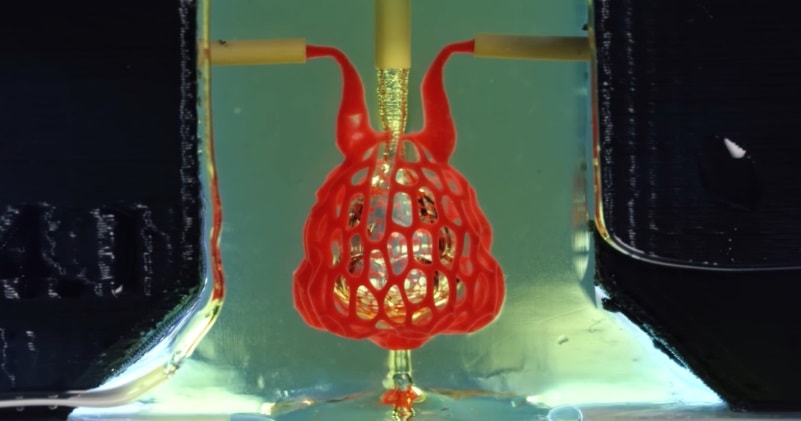Bioengineers Have Created A 3D Printed Organ That Mimics Human Lungs

Bioengineers have cleared a major hurdle on the path to 3D printing replacement organs and tissues with a new open-source technique for bioprinting tissues and templates with exquisitely entangled vascular networks similar to the body’s natural passageways for blood, air, lymph and other vital fluids.
source/image(PrtSc): Rice University
The research is featured on this week’s cover of Science magazine. It includes a visually stunning proof-of-principle — a scale-model of a lung-mimicking air sac where airways and blood vessels never touch yet still exchange oxygen — and experiments to test whether a bioprinted implant with both blood vessels and liver cells could benefit mice with a genetic condition that mimics human liver disease.
The team has come up with a new open-source bioprinting technology that has been termed as ‘stereolithography apparatus for tissue engineering’ or SLATE. During the SLATE procedure, individual layers are printed using a liquid pre-hydrogel solution. Once the solution is exposed to the blue light, it solidifies.
Advertisement
The work was led by bioengineers Jordan Miller of Rice University and Kelly Stevens of the University of Washington (UW) and included 15 collaborators from Rice, UW, Duke University, Rowan University and Nervous System, a design firm in Somerville, Mass./via/read more: rice.edu
http://bit.ly/2WzaZ4M